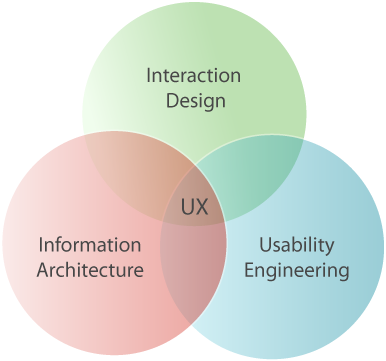We’ve spoken to three different companies in the past couple of weeks who are all recruiting a ‘UX practitioner’. Yet when we asked what they were looking for, we found that each of them is looking for a different role. So we started to question the value of the term User Experience (UX) which seems to have become an over-used label to refer to everything from design to internet marketing.
As a term, user experience is too broad and lacks a clear definition. In fact, there is no agreed definition of what user experience is even within the UX community. There are some excellent examples of people trying to explain what user experience is and what it is not, but in terms of a role within an organisation, it seems too broad to be useful because everyone contributes and a user experience practitioner can’t control every aspect of a site.
Before the term ‘user experience’ rose to popularity, the web industry relied upon terms such as information architecture, interaction design, and usability testing. They may not be as sexy or marketable as user experience, but they provide a much more structured way to consider roles and responsibilities for an organisation keen to improve users’ experience. Let’s look at each in turn:
Information Architecture
The origins of Information architecture lie in library sciences and is defined as “the art and science of organising and labelling websites, intranets, online communities and software to support usability” by the IA institute.
Typically, an information architect will help you to restructure, categorise and label information into a structure users will find easy to understand. A better way to explain it is provided by Christina Wodke:
You know when you’re on a website and you see a bunch of navigation choices to click on? I’m the one who decided what the choices are, what they are called and where they take you when you click.
Christina Wodke
Interaction Design
Interaction design comes from the academic discipline of Human-Computer Interaction. The IxDA provide the following definition: “Interaction design defines the structure and behaviours of interactive products and services and user interactions with those products and services.”
An interaction designer works out what the user goals are, and then decides what tools users need to achieve their goal as quickly and easily as possible. This is explained further by Bill Verplank in a Video on YouTube
Usability Testing
Usability Testing or Usability Engineering “is a discipline that provides structured methods for achieving usability in user interface design during product development” according to Deborah Mayhew in her excellent book The Usability Engineering Lifecycle
Usability Engineering also has its roots in Human-Computer Interaction and is a critical tool in ensuring a website meets the needs and expectations of its users. According to Jakob Neilsen, usability testing has three core activities “get representative customers, ask them to perform realistic tasks, and shut up and let them do the talking”
So, before you recruit a UX practitioner or ask for help with user experience take a moment to consider what type of help you are seeking and which discipline this would fall into. Bear in mind that there are lots of organisations like us who can provide all three services, but when recruiting or searching for a freelancer bear in mind that a good usability engineer isn’t necessarily a good interaction designer, and a good information architect won’t necessarily know how to design, facilitate and interpret usability research.

